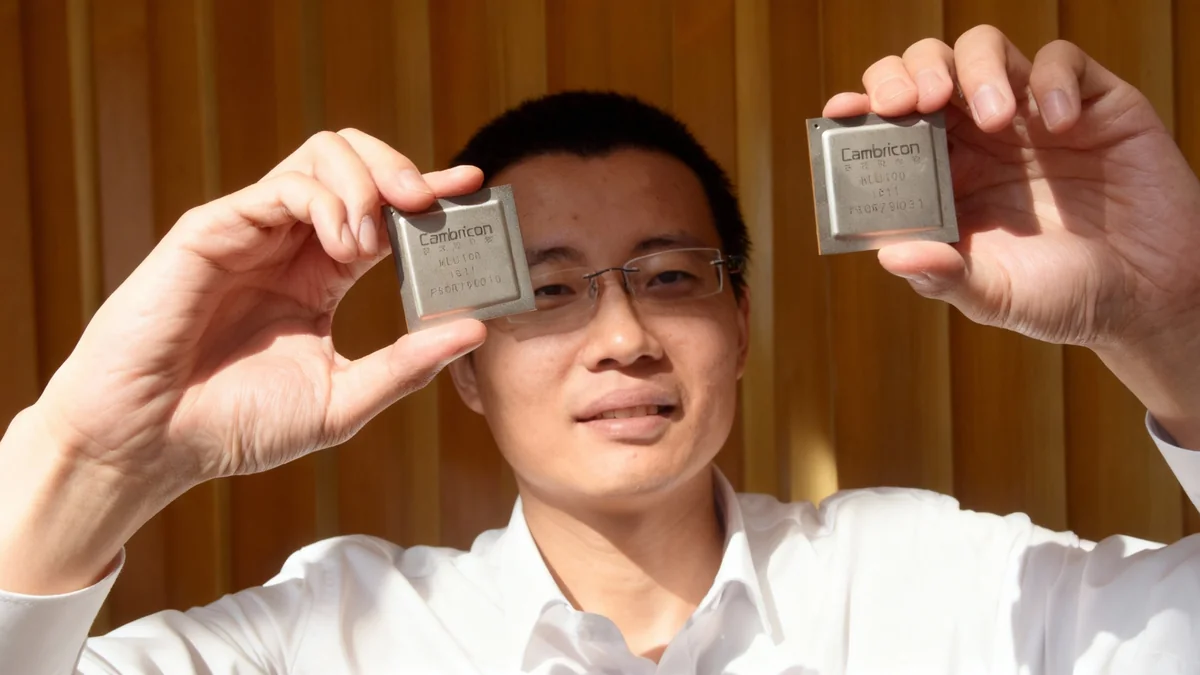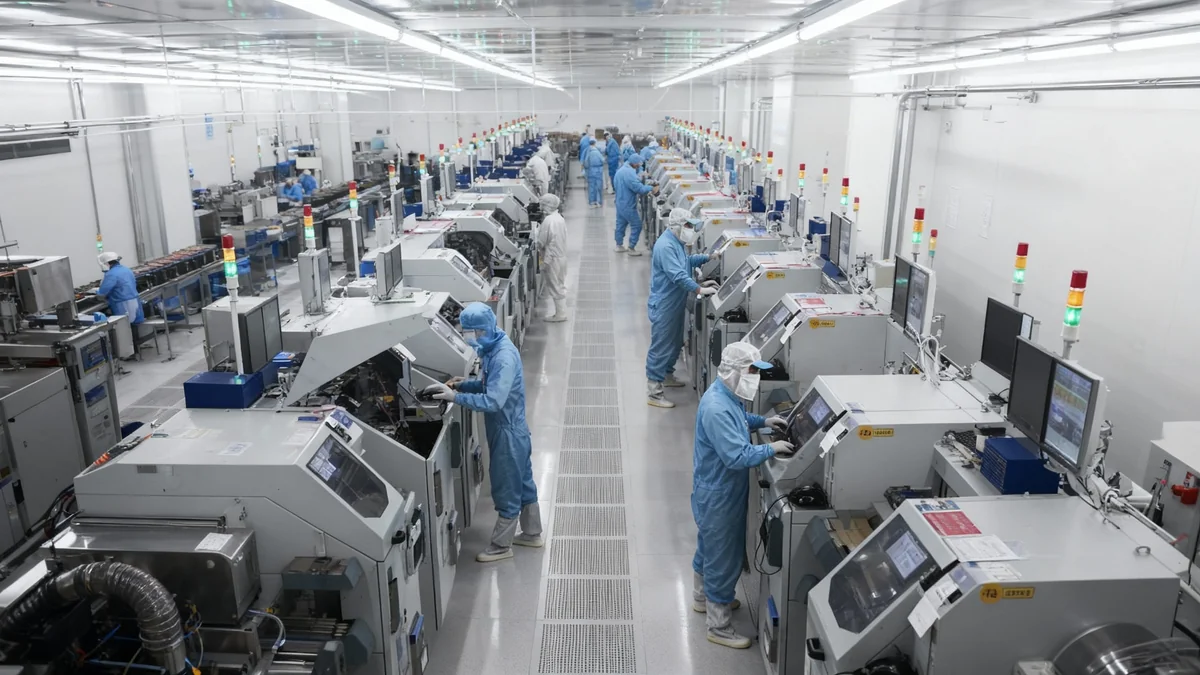Nvidia CEO Jensen Huang has described China's semiconductor industry as being only "nanoseconds behind" the United States, urging Washington to reconsider its stringent export restrictions on advanced AI chips. During an appearance on the BG2 podcast, Huang argued that allowing American companies to sell technology to China is crucial for maintaining U.S. geopolitical influence and technological leadership.
Key Takeaways
- Nvidia CEO Jensen Huang stated China's chipmaking capabilities are nearly on par with the U.S.
- Huang advocated for easing U.S. export controls on AI chips, citing benefits for American influence.
- Nvidia is navigating restrictions by developing compliant chips, such as the H20 GPU, for the Chinese market.
- Chinese tech firms like Huawei are accelerating their own semiconductor development to achieve self-sufficiency.
- Major Chinese companies including Baidu, Alibaba, and Tencent are heavily investing in homegrown silicon.
Huang Argues for Market Access
Jensen Huang's recent comments highlight the complex balance between national security concerns and economic interests in the global technology sector. He positioned China as a significant and rapidly advancing competitor, emphasizing the need for American companies to remain engaged in the market.
"We’re up against a formidable, innovative, hungry, fast-moving, underregulated [competitor]," Huang stated on the podcast, referring to the drive within China's tech industry and engineering culture.
His core argument is that selling U.S. technology, even in modified forms, helps embed American standards and ecosystems within China. By contrast, he suggests that completely walling off the market could accelerate China's efforts to create a completely independent and competing technological stack.
Navigating U.S. Export Controls
The discussion comes as Nvidia attempts to resume significant sales to its Chinese customers following the implementation of stricter U.S. export rules. These regulations have directly impacted Nvidia's ability to sell its most powerful AI accelerators, the A100 and H100 GPUs, in China.
In response, Nvidia developed the H20 AI GPU, a specialized chip designed to comply with the performance thresholds set by the U.S. Commerce Department. After a delay, the department reportedly began issuing licenses for the H20's export in August, allowing Nvidia to re-engage with one of its largest markets.
A Strategy of Compliance
The H20 represents Nvidia's second major effort to create a product tailored for the Chinese market under U.S. regulations. The company is reportedly already developing a successor to the H20, aiming to offer improved performance while remaining within the legal boundaries of current export laws. This strategy is designed to keep Chinese companies within Nvidia's ecosystem, which is built around its CUDA software platform.
Huang expressed a desire for a return to more open competition. "They [China] publicly say… they want China to be an open market, they want… companies to come to China and compete in the marketplace… and I believe and I hope that we return to that," he said.
China's Push for Self-Sufficiency
While Nvidia works to maintain its presence, China is aggressively pursuing technological independence. The country's domestic champions are making significant progress in designing and producing their own advanced semiconductors, a direct response to U.S. restrictions.
Huawei has emerged as a key player in this effort. The company is now shipping its Atlas 900 A3 SuperPoD systems in large volumes. These systems are powered by Huawei's proprietary Ascend 910B chips, which are designed to compete with Nvidia's offerings in AI training and inference tasks.
Huawei's Ambitious Roadmap
Huawei has outlined a multi-year plan extending through 2027 for its Ascend line of silicon. The company's goal is to match and eventually surpass the performance of current-generation AI chips from Western companies. A crucial part of this strategy is building a software ecosystem that is independent of Nvidia's dominant CUDA platform.
According to Huang, Nvidia previously held a commanding 95% market share for AI chips in China. The rise of domestic alternatives like Huawei's Ascend series presents a direct and serious challenge to that dominance.
Investment from Chinese Tech Giants
The national push for self-reliance is supported by massive investments from China's largest technology firms. Companies like Baidu, Alibaba, Tencent, and ByteDance are all dedicating significant capital to developing custom silicon.
These investments take two primary forms:
- Internal Development: Building in-house chip design teams to create processors optimized for their specific workloads, such as cloud computing and AI services.
- Funding Startups: Investing in a growing ecosystem of Chinese semiconductor startups to foster innovation and create a diverse domestic supply chain.
Tencent, for example, has publicly announced that it has fully adapted its internal infrastructure to support chips developed domestically. This shift indicates a tangible move away from reliance on U.S. technology and a commitment to building a parallel ecosystem.
Nvidia's strategy of offering compliant chips like the H20 is a calculated move to keep a foothold in this evolving market. While these chips are less powerful than the company's flagship products, they provide Chinese firms with a viable path to continue using Nvidia's hardware and software, at least for the time being. The long-term success of this approach will depend on the pace of China's domestic innovation and the future of U.S. trade policy.





